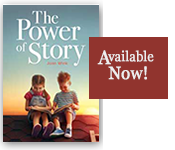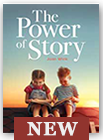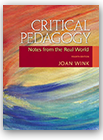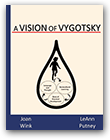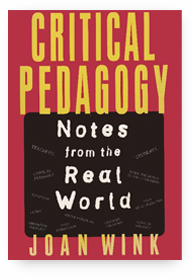For example, Professor JS (Spencer, 2001-2002) reflects on the initial years of his 30 years of teaching history.
When I came out of graduate school to begin my college teaching career, I was told to go into the classroom and teach…I knew nothing of the literature that would introduce me to the subtleties of the teaching-learning process….Teaching is telling and knowledge is acquisition of facts according to time-tested pedagogy. If students could demonstrate sufficient recall of facts, this showed understanding and effective teaching had taken place….The traditional teaching paradigm was simply not concerned with how students learn. (pp. 93-94)
After teaching in the transmission model for 10 years (teachers talk/student listen), Professor JS acknowledged that the students in his classes did well on tests. However, he slowly became aware that their understanding might not be as deep as he wanted. So, the professor set out to fix the problem. He devoted the next 10 years of his professorate to this objective.
I used all the plays to enhance learning that I had learned by obedient observation of my own instructors. I talked louder and slower, I had students work more problems on the board, I assigned more homework problems, I prepared a study guide, I demonstrated how to solve problems, and I set up recitation sections. (p. 94)
Twenty years gone. Professor JS used up all of the pedagogical tricks he knew. We remind you that his bag of tricks was mighty small, as all he knew was what he had experienced as a passive student. So, he took the next logical professional tactic – blame the students. “Nothing worked, so it couldn’t be my fault” (Spencer, 2001/2002, p. 94).
I had noticed that instructors rarely fault themselves but tend rather to find deficiencies in student background, motivation or ability. More experienced teachers assured me that students were much better in years gone by. But I knew these students. They were bright, their secondary preparation was better than mine had been and they worked diligently at what I told them to do…. I suspect that students never were as good as they used to be. (p. 94)
For many, transmission is the paradigm of choice. For others, they don’t know other options. For still others, it is a paradigm, that needs to be deconstructed. People tend to believe in it or not, with passion. Each of us reading this page has learned within the transmission paradigm. However, if we are honest, very few of us like to be talked at – and very few of us retain much information when all that is required is memorization. We believe that this is a great place to begin your own personal and professional reflections. Write about your own experiences with transmission model learning and teaching.
Generative
The generative approach to teaching and learning is based on the idea that we construct, or generate, knowledge in the learning process. Its historical roots reach back, not only to progressivist thought of the last century but also beyond that to the antiquities. Leaders of this educational paradigm are Socrates, Dewey, Vygotsky, Montessori, and Piaget. The Socratic method of dialogue was the impetus for generative teaching and learning of today. The generative approach is closely aligned with constructivist and interpretivist approaches. Transactive theory (Rosenblatt, 1978) is akin to generative pedagogy.
This school of thought is characterized by active communication. It is grounded in interaction, multiple perspectives, holistic learning, and social construction of knowledge. Students are responsible for negotiating meaning with the text and within their environment. Knowledge is socioculturally grounded. It frequently requires complex pedagogical skills of the teacher. Learners construct their own knowledge from the text or from the interactive processes of a experience-based, student-centered classroom. Students move from a passive role to be active learners.
As we write this paragraph, we as a nation are moving away from the constructivist approaches to learning, which were so popular during the 1980s and 1990s. Thus, it is safe to guess that readers of this text have had experience with generative teaching and learning.
Piaget and Vygotsky
Below the surface of a discussion of generative learning are Piaget and Vygotsky who, although they each fall under a broad heading of construction of knowledge, bring their own unique perspectives. Both Piaget and Vygotsky were interested in learning and human development. However, for Piaget, human development leads learning and, thus instruction needs to be adapted to the level of development of the child. Vygotsky, on the other hand, believed that learning leads human development and, thus instruction enhances development.
We begin with Piaget, as he is often the most commonly understood in the United States of the two educators. Piaget believed that knowledge was cognitively constructed; he focused on active construction and a restructuring of prior knowledge. Piaget was very intrigued with the construction of knowledge in the mind. For him, the teacher did not transmit knowledge but rather encouraged the learners to think in order to understand. He also taught that students progress through natural developmental levels. Yes, Piaget is associated with construction of knowledge, but it often thought of as cognitive construction of knowledge. Transmission pedagogy posits that knowledge is what we memorized. Piaget had a different view; he said that knowledge was what we cognitively constructed with others. Piaget was a cognitive constructivist.
Vygotsky, on the other hand, is not as well known in schools in the United States. Vygotsky also believed that knowledge was socially constructed; however, he extended this view to highlight his understanding that knowledge and values are culturally grounded. Whereas Piaget was interested in the construction of knowledge within the mind, Vygotsky was more interested in the cultural and social factors, that influence the construction of knowledge. Knowledge is mutually and collaboratively created and grounded on the experiences that the students bring to class. For Vygotsky, the teacher did not transmit knowledge, but rather co-constructed knowledge, which was always based on social, cultural, political, and historical roots. Vygotsky did not envision pre-determined developmental levels. He believed that learners continually move up to their next developmental level, in collaboration with a more capable peer. Vygotsky was a social constructionist (Wink & Putney, 2002).
Returning to Professor JS
Returning to the saga of Professor JS, when we last left him, he had spent the first 20 years of his career as a professor vainly struggling to discover how to make the learning in his classroom meaningful, as he taught from his unexamined assumption about transmission or behaviorism being the only way to teach. At last glance, he has tried it all and had given up by blaming the students. Then an unexpected event in his life cause him to reexamine his long-held assumptions (Spencer, 2001-2002):
About this time-beginning my third decade as a teacher-I chaired a national task force on the teaching of general chemistry. From this diverse collection of teachers of first-year chemistry, I began to learn about teaching. . . .I found that no erudite body had established the accepted method of delivery for the classroom. (p. 94)
Yes, Professor JS, there is no magic recipe. No one size fits all. The imposition of sameness on such diversity will not work. As Professor JS collaborated with two colleagues, they made some startling and upsetting discoveries. From the literature, they read that the way they had been teaching students had been deemed useless 40 years ago. You can understand their frustration. The most significant concept that they learned from the literature was: “The crucial point: What goes on in the learner’s head is dramatically influenced by what is already there. Knowledge is personal” (p. 95). As Professor JS so clearly stated it, “Telling is not teaching” (p. 95).
In the past, I had assumed that, if I could give examples that were clear to me, these examples would be equally clear to the students. I believed that I could make direct transfer from my mind to theirs. I had what educational psychologists term an egocentric point of view. The student would see exactly what I was seeing. But, I was wrong. (95)
Now, we will take brief detour on the multiple meanings of construction of knowledge before we return to the inspiring conclusion to the saga of Professor JS.
ConstrucTIVist and ConstrucTIONist
We said that we had chosen to look at education though through three perspectives. However, we recognize that even within these three categories there are other perspectives. For example, as U.S. education moved from behaviorist to cognitivist to constructivist, decades passed and different interpretations of constructing knowledge together arose.
Although the construction of knowledge in classrooms has varying names with varying understandings, they are linked by the belief that people generate knowledge and are influenced by values and culture (Scheurman, 1998, p. 31). However, even the categories can be categorized. For example, constructivism (Scheurman, 1998) found at least 12 different categories or interpretations.
It appears that many have a common understanding that we construct knowledge jointly with another or with others. We come together; we read, inquire, explore; we learn together. Thus the word, construcTIVist, has a broad base of mutual understanding. Or did we mean, construcTIONist? Fasten your seat belts; let’s see if we can construct knowledge about this construct of the construction of knowledge.
At a time when many share these understandings about the social construction or generation of knowledge, among some academics there is developing a more complex understanding of both of the words, construcTIVist and construcTIONist. For educators, we need to understand the evolving concepts. In what follows, we will focus directly on construcTIVist and construcTIONist. The capital letters in the two words serve only as mnemonic learning aides. In addition we provide the following cognitive coat hooks, that precede our explanation (see Figure 3.5).
Here is an example of construcTIVist learning. When Joan and Dawn talk about Piaget’s developmental levels, they are socially learning. Or, as the graduate students walk through the classroom door, talking about their teaching contexts and the night’s assignments, this is social learning. The focus is on INTER, or knowledge construction BETWEEN people.
By reflecting on the following example of construcTIONist learning, the focus is on a deeper sense of construcTIONist. If Dawn is sitting alone, reading a book about Vygotsky, it still has the potential to be social construction of knowledge, However, it is not simply interaction with Joan. It can also be interaction with the social, cultural, and historical context she brings with her and that which is within her environment. For example, as Dawn reads the Vygotsky book all alone, she is bringing other cultural artifacts to the learning as well: Her computer is in front of her; another Vygotsky book is within reach; an educational foundational text is lying open on the table by her computer. She uses the computer and the two other books to make meaning. In addition, she uses her language, as she mumbles to herself while searching for a specific file she knows is in her computer, to help her make more meaning. Dawn socially interacts with her social/cultural/historical context, including a cultural tool (language) and cultural artifacts (her computer and two books).
INSERT – FIGURE 3.5: Constructivist and Constructionist
Here is another example of social construcTIONist learning. The next time you are in a teachers’ lounge, watch people as they interact with the copy machine in an attempt to copy, collate, staple, and count. This is what you might see:
They begin to use a cultural tool (their language); you can hear the muttering. They might even get a little testy if you interrupt their social interaction with their own language and the copier. The cultural artifacts can be almost anything that is handy, such as the various buttons to push, instructions taped on the top, or another colleague’s example. It might, perhaps, even be another person who, unfortunately, happens to pass by-providing it is the right person, preferably an office person who runs the machine daily and brings a wealth of social, cultural, and certainly historical context to the machine. (See Figure 3.6)
INSERT – FIGURE 3.6: ConstrucTIVist and ConstrucTIONist
Now armed with real-life examples and a couple of summary statements, let’s make one last mnemonic learning tool.
INSERT – FIGURE 3.7: Think Piaget; Think Vygotsky
Because of the different meanings of constructivist and constructionist, we will use the word, generative, to imply a broad semantic understanding of building knowledge, as opposed to transmitting knowledge.
The entire previous discussion raises another question for us: What does to know mean? For example, in schools we want students to know the curriculum, to know the times tables, to know the theorems, and to know the proper grammatical rules. Some even suggest that there are specific things that all students should know. What does to know mean? Looking back on the discussion of construcTIVist and contrucTIONist, check yourself to see how much you know (See Figure 3.9). Imagine that the first test question is: What is construcTIVist and construcTIONist? Chose the right answer for you.
Returning to Professor JS
Returning to the saga of Professor JS, we see that he had discovered the meaning of cognitive constructivist (Spencer 2001-2002).
The crucial point: What goes on in the learner’s head is dramatically influenced by what is already there. Knowledge is personal. To effectively promote learning, the instructor need to know what the students already know and what is going on in their minds and must be able to ascertain when a student is having difficulty. These cognitive students have shown that it is not possible for me as an instructor to transfer an idea intact from my head to the heads of students. This realization was profoundly unsettling but enlightening. The basic assumptions on which I organized my classes were turned upside down. (p. 95)
INSERT – FIGURE 3.9: Check Yourself
INSERT – FIGURE 3.10: A Basic Scientific Approach
Next, Professor JS, to his continuing credit, discussed his new learning with the students and devised an alternative approach to teach his college chemistry class. His basic premise was that students would be learners and teachers. He followed the basic approach that scientists follow when they do a study.
If you should ever become confused with generative, or construcTIVist or construcTIONist, or social, cultural, or political mediation of knowledge, keep in mind what Patrick, a 13-year-old boy, said after he visited a three-hour university class that his father, Professor Young, was teaching. Patrick was a home schooled student, who was doing well with his understandings of Western philosophies, but he really knew very little about Eastern philosophies, which was his father’s area of expertise. The family created a plan for Patrick to begin his studies of Eastern thought, and part of the plan included Patrick attending a certain number of his father’s evening classes. To appreciate this story, we must tell you that Professor Young has a great reputation as an instructor, and he is well loved and respected by students and faculty. The story is even more poignant and revealing, as we heard it from Professor Young.
At the end of the first class, Patrick and his dad were walking out to the car in the parking lot.
“Well, Pat, what did you think of class tonight?” Professor Young asked.
“Dad,” Patrick replied, “maybe if you got the people involved with their learning, it would help.”
Yes, Patrick, getting people involved with their learning is what the generative model of teaching and learning is all about.
Wink, J., & Wink, D. (2004). Teaching passionately: What’s love got to do with it? Allyn & Bacon, pp. 30-37.
This is a story about the differences between construcTIVist and construcTIONist; it taken from a longer discussion of different perspectives on pedagogy. Professor JS* in this story is a real person who published a reflection on his struggles with perspectives on pedagogy in his 30 years of teaching.
*Spencer, J.N. (2001-2002, Winter). Thought and action. The NEA National Education Association Journal, XVII(2), 93-100.
